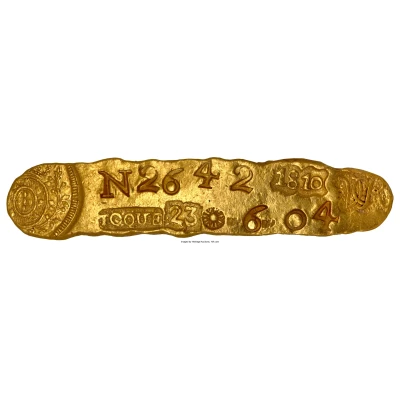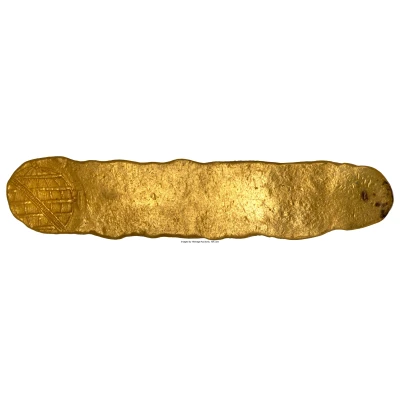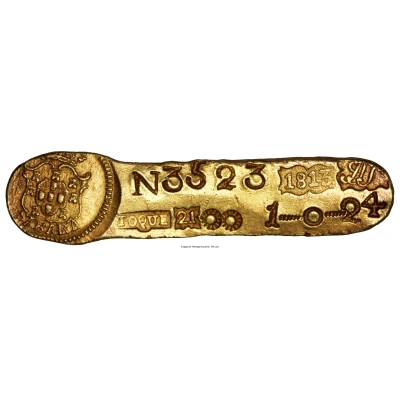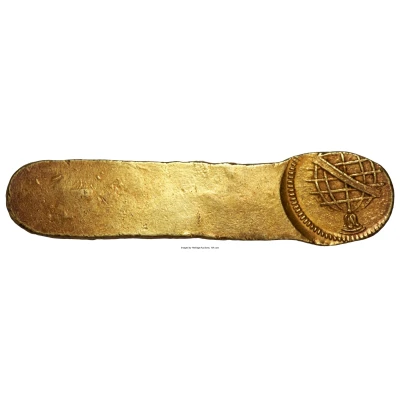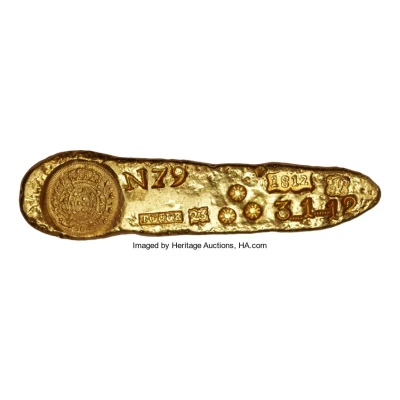
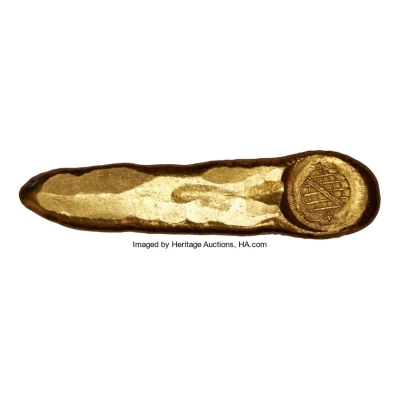

© Heritage Auctions
Ingot - Joao VI Prince Regent
1812 year| Gold | 90.2 g | - |
| Location | Brazil |
|---|---|
| Type | Bullion › Bars |
| Year | 1812 |
| Composition | Gold |
| Weight | 90.2 g |
| Shape | Rectangular (irregular) |
| Demonetized | Yes |
| Updated | 2024-11-13 |
| Numista | N#117515 |
|---|---|
| Rarity index | 97% |
Comment
Gold Ingots as Legal Tender in BrazilFor a period in the colonial history of Brazil, in addition to coins, gold ingots and bars circulated as legal tender. Legislation was passed to control the circulation of powder gold and to tax it at regional Foundries that were initially established in the 1770's. As the ingots were produced, it received marks that would identify the foundry, year, sequential production number, the assayer's monogram, the finess of the gold, and the weight. This way, the ingot was approved to circulate as coin in the amount defined in the "Guia", or respective certificate. In time, bars and ingots were taken out of circulation and the vast majority of bars melted and their respective Guias lost.
It became the work of numismatists to register and catalog the few pieces that remain in existence today. Prodigious Brazilian numismatist Kurt Prober dedicated a good part of his life as a numismatic researcher to produce a comprehensive study which he published in two volumes in 1990 under the title "Ouro em Po e em Barras Meio Circulante no Brasil 1754-1833". This work has become the definitive reference for this area of Luso-Brazilian numismatics.
The total number of authentic ingots today is 219 pieces from 9 foundries (Numismatist Claudio Schroeder of Porto Alegre contributed) Here is the breakdown:
